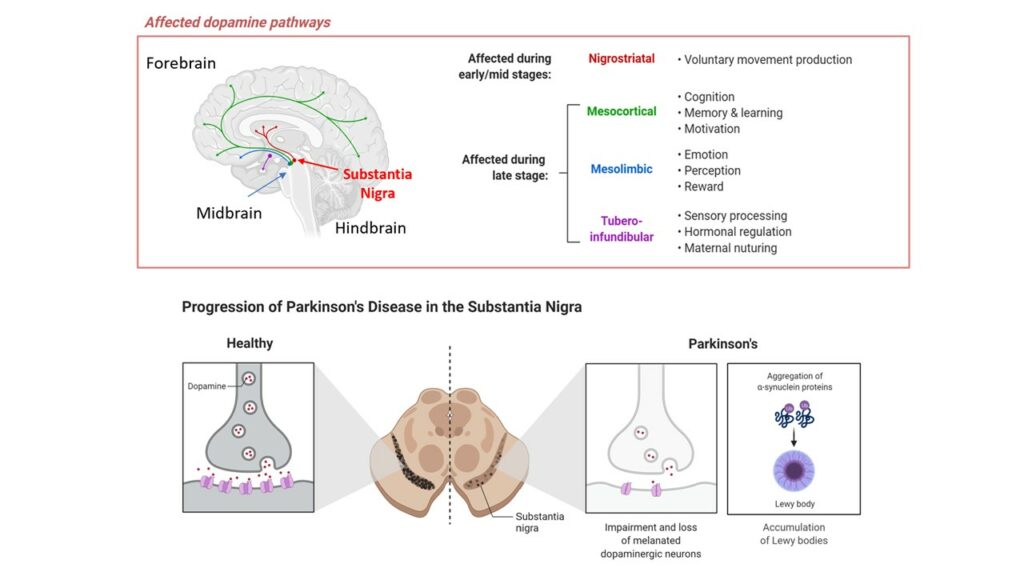Parkinson’s Disease Program
In Parkinson’s Disease (PD), a very specific set of dopaminergic neurons in a region of the brain called the Substantia Nigra die, causing patients to have difficulty walking and they eventually can become immobile. PD affects approximately 0.5 – 1 million patients in the US alone, and while current therapeutic strategies can benefit patients, they are limited.
We still know relatively little about the disease, for example why these specific cells are dying, and because of this, drug production is lagging.
Researchers at the Neural Stem Cell Institute have developed new techniques to model Parkinson’s Disease (PD) using patient-derived induced pluripotent stem cells (iPSCs). By creating 2D and 3D cell cultures as ‘disease in a dish’ models of human dopaminergic neurons in PD, we can study the disease process and identify novel therapeutic strategies.
Our researchers are developing a novel intrabody gene therapy to lower the presence of the toxic alpha-synuclein (α-syn) protein that builds up in the affected neurons as a treatment for patients with PD.

